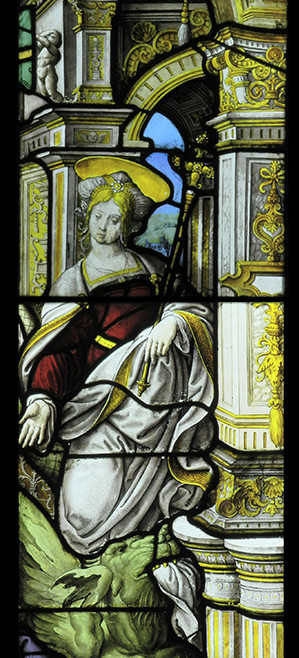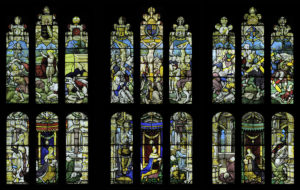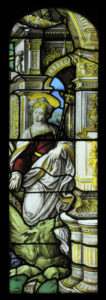
The Vyne Chapel, Sherborne St. John
Medieval
The Vyne Chapel, Sherborne St. John, Hampshire.
The conservation of 3 large windows from the east end of the chapel, and the design, manufacture, and installation of a bespoke internally ventilated environmental protective glazing system, including a 1 year period of environmental monitoring.
Owned by the National Trust, the stained glass at the east end of the chapel is internationally significant, and the most important under their custodianship. It dates from c. 1525 and is certainly by the group of European glaziers involved in major royal commissions at that period. The upper tier depicts scenes from the Death and Resurrection of Christ, and the lower tier depicts Royal donor figures with supporting saints. In particular they feature a young King Henry VIII and Catherine of Aragon. Employing technically brilliant craftsmanship and use of the new innovation of enamel colours, which could be painted onto the glass in various colours, the painters worked in the Renaissance style with an emphasis on differing perspectives. Typical of this period the glass has become more like a painting; the design is no longer held within the confines of the stone reveals, but projects across the entire window. This was a high profile project for the National Trust, with a great deal of visitor interpretation and interaction throughout. Our team worked closely with the Trust to make this a model project in terms of visitor engagement and media publicity.
After many years of planning, the project began with a comprehensive 12 month period of environmental monitoring and the insertion of a test section, thereafter the conclusions drawn led to a finalised conservation strategy. The principles were those of restraint, and collaboration with international colleagues was underpinned by reference to international guidelines. The work entailed minimal cleaning and reversible conservation of the glass, and the installation of a bespoke internally ventilated environmental glazing system, to protect the stained glass for future generations.






